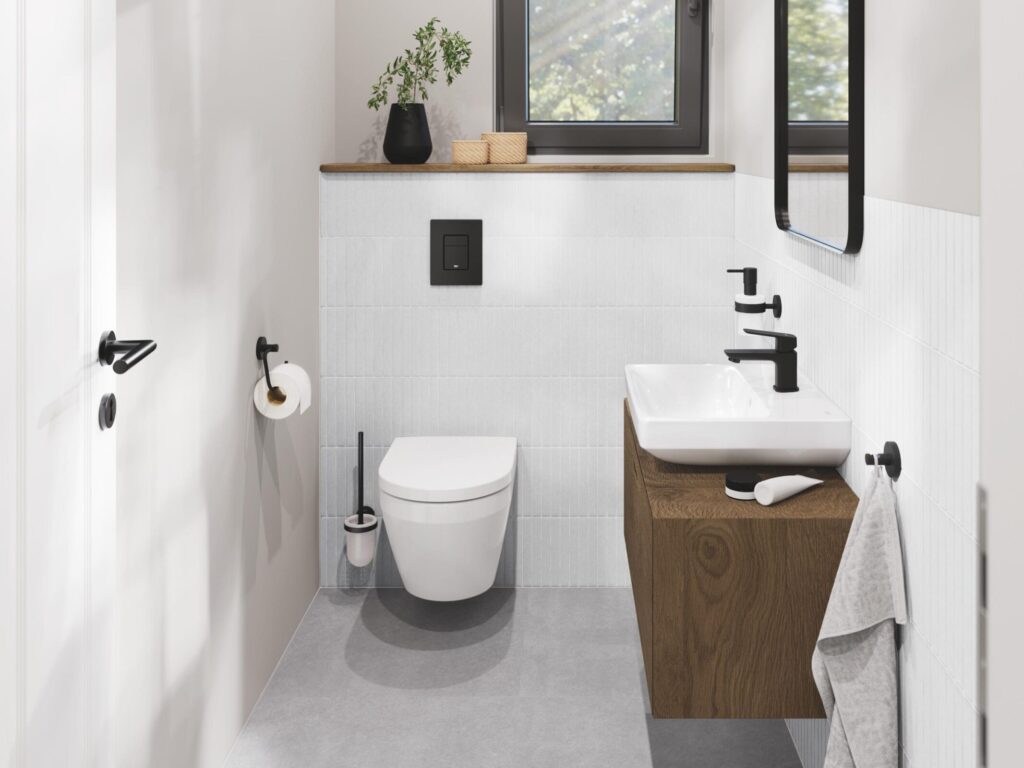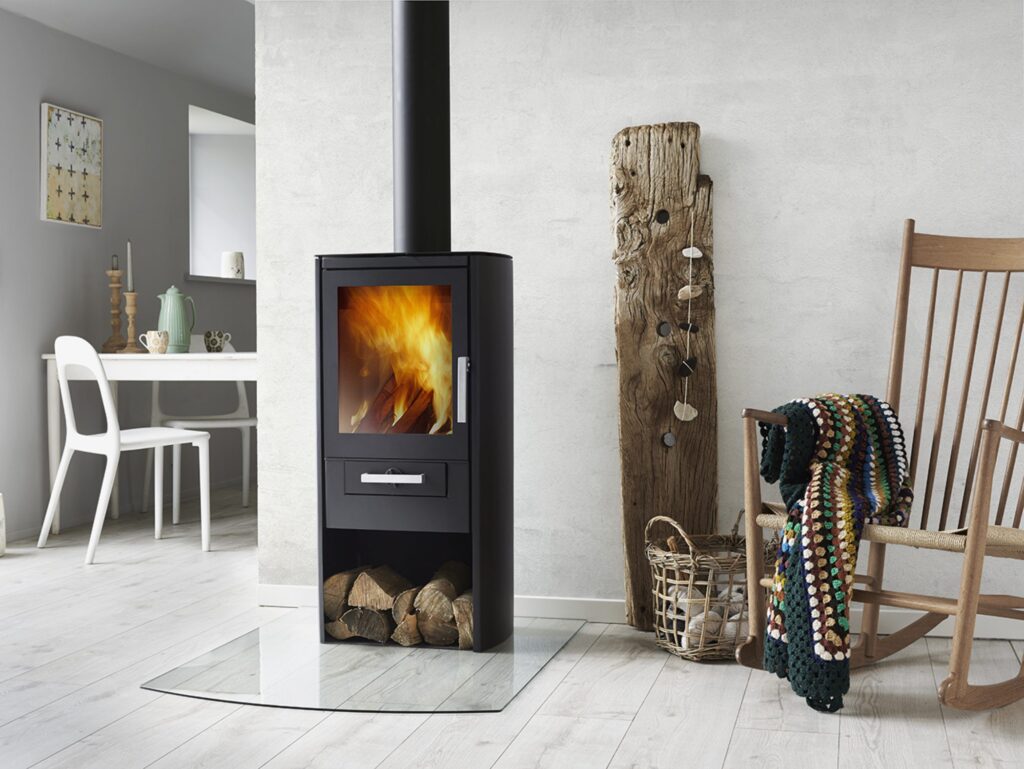As the world strived to limit the spread of a virus, alternative technologies and trends around hygiene become increasingly popular, particularly in the kitchen space
Since the Covid-19 pandemic began, the world has grown increasingly conscious about antibacterial products, sanitising and cleanliness. This new found popularity has even branched into the design aspect of the home, especially the kitchen and bathroom.
The kitchen has always been a clean room because of its function. Organisations have continued to innovate in this area to not only present the next best nonporous surface, but also to create new materials and technologies to advance in this sector. The antimicrobial kitchen has developed into a trend over the past year because of its hygienic benefits, as well as additional factors such as being eco-friendly and luxurious.
Non-porous worktops
We hear the word nonporous used a lot as a selling feature for countertops and other kitchen necessities, but do we really know what this term means? And if so, is it really all that important?
Nonporous simply describes something that is not permeable to air, water or other fluids. If a surface such as a kitchen countertop is nonporous, it simply cannot allow or contain any air or water within it. Pores are minuscule openings or crevices that allow air and water to flow to and fro—nonporous surfaces don’t have pores, so they do just the opposite.
It’s almost as if they hold up a ‘Do Not Enter’ sign to air, water, bacteria or whatever else that might wish to intrude. And the air, and water, and bacteria have no choice but to obey. You’ve likely noticed that concrete sidewalks, rocks, and stones seem to change color after a rainstorm. The reason they appear darker is because they are porous, and the pores have allowed water from the rain to enter.
It should be starting to make sense why we might not want these pesky pores to be lurking within our kitchen countertop surface. Non-porous countertops assure us that undesirable substances cannot penetrate the surface. When we wipe the top of a nonporous counter dry with a cloth, we can be confident that it is dry (and clean) all the way through. We know that water is not lurking inside the countertop somewhere, providing moisture for mold to flourish—and, we can rest assured that bacteria’s not hiding beneath the surface since nonporous countertops are antimicrobial by design.
Many nonporous countertops are manufactured today including solid surface Corian, and the many quartz products like Cambria, Silestone, and Corian Quartz. There are many attractive porous countertop options as well—granite, for example, is a popular but porous countertop surface. However, you can find nonporous surfaces that provide both beauty and food-prep safety.
Preventing contamination
September is National Food Safety Education Month and food poisoning and prevention is high priority in any kitchen, commercial or domestic. Design choices can have a big impact on not just the look of your kitchen but the safety as well.
Quartz kitchen countertops: Words you’ll get familiar with regarding countertop products are: “Porous” and “non-porous”. These represent the difference between a germ sanctuary and a bacteria-free surface. Everyone loves granite in the kitchen but it’s a porous product. This means there are tiny pours on the surface—places where germs and bacteria can get trapped and fester. It’s not good for you or your family. Sure, we all clean and wipe our kitchens down but these extra pockets can make it more of a pain.
This is where quartz is a standout option! These products are engineered with the highest quality in mind. Quartz is non-porous making it the hyper hygienic choice. Not only is it a durable material that’ll be less likely to crack and chip, it looks just as beautiful as granite too.
Laminate cabinets: Messes overtake your food prep space at any given time—those splashes have a wide radius of impact! The best thing to do is find low-maintenance and easy to clean products. Laminate cabinets are your answer. Technology has come a long way and that includes extending to the kitchen. With progressive techniques, laminate cabinets are constructed to look exactly like their real-wood counterparts. With laminate cabinets you’ll have a sturdy, lasting product that will be require little upkeep. A regular wipe down helps prevent the spread of bacteria and germs and keeps your cabinets looking stellar. If you’ve got little ones running around, you’ll want something that’s easy to maintain and disinfect.
Backsplash: Since we mentioned quartz countertops it’s only right to mention the very similar and clean-friendly option of a Corian backsplash. Corian is also a non-porous product and resistant to mold and mildew. It’s another low maintenance product that’ll look stunning in your updated kitchen design. Stop the spread of germs with a backsplash built to guard against all the messes of the kitchen.
Contactless technology
Contactless technology has seen a vast growth in innovation with the redevelopment of sensor taps to meet the growing consumer needs for hygiene in the home. Automatic taps contribute to a lot more than just hygiene. Contactless technology in taps is also more sustainable in two main ways:
Water conservation: Finding ways to save water is very important. Electronic taps are usually designed with a low flow rate, an aerator in the spout and system or materials that prevent leakage. For instance, while traditional basin taps pour between 10 and 15 litres per minute, Giampieri sensor taps would not use more than 6 litres and their solenoid valve is closed by default (and placed before the hose, which in this case supports up to 15 bar). Bear in mind that a dripping tap can waste between 300 ml and 1 litre per hour.
A small office of just 7 people could save 12378.60 litres of water a year installing automatic taps, the equivalent of 155 full baths.
Energy saving in the long term: Each sensor tap requires 6, 9 or 12 volts, depending on the brand. This expense is unavoidable, whether hardwired or battery operated. Nonetheless, e-taps can make a difference during activation. Selecting the preferred flow and temperature every time a traditional faucet is activated wastes energy, among other things. In this regard, automatic basin taps with a constant temperature (cold, warm or premixed) are a great choice for commercial washrooms. Likewise, thermostatic faucets would be more energy efficient in showers than mixer lever ones.These settings can be even more environmentally friendly if power comes from renewable energies and if further restrictions are implemented in the tap handle or in the rest of the system (aerators, flow limiters, pressure reducing valves). The latter gadgets sound a wise choice also for those who are still using traditional basin taps.
Water and energy efficiency reduce the total bill amount in dwellings. A British household needs on average 360 litres each day and a portion of it can significantly decrease from 30% to 50% by placing sensor taps in the bathroom and kitchen.
The fact that the flow rate can be set means a cleaner area in the bathroom and kitchen, since splashes during activation are not possible. In this respect, the self-closing mechanism will not lead to sink overflow and users’ dirty hands would not be touching the tap. The contactless technology negates the spreading of germs and bacteria onto additional unnecessary surfaces. This contactless aspect has become extremely popular and grown alongside the smart home aspect within the consumer market. Covid-19 has drastically changed the functionality and aesthetic of the home. Hygiene has now become one of the top luxury desirables on the market.
With touch free taps, one does not have to get dirty again reusing the same lever or handle and there will not be cross-contamination between users through the tap. Despite that, some suppliers have disposable spouts for sensor taps, designed for healthcare environments that aim at ensuring hygiene.
Additionally, inclusivity has gained traction over the last few years. Sensor taps are simple to manage by all kinds of users, including children and those with painful hands (arthritis), dexterity limitations and other mobility restrictions. Furthermore, single supply automatic taps can also pour cold or premixed water, so nobody will be scalded, which is essential for people with any degree of insensitivity.
It’s safe to say that the pandemic has heightened everybody’s awareness of hygiene and contamination risks, especially with spreading infection to the wider public. This is one of the main contributing factors to the rise of antimicrobial kitchens, as well as the adding benefits of being environmentally friendly, smart and trendy.
Commentary: John Robinson, Marketing Manager, BLANCO UK
Lockdowns, along with healthy budgets from a reduction in travel and entertainment opportunities, have driven advances in innovation in overall kitchen design, appliances, lighting, sinks, taps and integrated organisation. With a hike in granular-level online consumer research, awareness has driven desire for items with added functionality and conscience-easing properties like hygiene and environmental impact.
Take hygiene for example. It has always been a consideration but, post-COVID, it is emphasised and a key factor behind the surge in sales of sensor taps, soap dispensers and our granite composite sinks. Silgranit is an extremely hard-wearing and durable material that is easy to keep clean and has a patented anti-bacterial protective formula built into the mix.
You can’t talk about technology in the kitchen without talking about boiling water taps. There are a few really big players in this category and the level of advertising has increased consumer appetite. Innovation in hot taps, however, is coming from those brands with a growing presence. Added innovation, such as measuring functions and safety features, are resonating with consumers. Premium materials like titanium boilers – rather than stainless steel or copper – are stronger and improve hygiene.
These product developments give the end-user options and provide reassurance. Space is still key, however. When a smart tap system absorbs virtually an entire kitchen cabinet, more storage has to be found elsewhere or space is compromised.
The BLANCO hot and filter systems have been designed to take up as little space as possible, meaning that they can be combined with integrated organisation and waste management systems. This one-unit solution makes the most of that no-go-area under the sink, adding practicality and simplicity to daily use while also opening up options in kitchen planning. Technology is the driving desire but the real innovation is in the details and how those details combine to make a difference to kitchen life.
Commentary: Derek Aaronson, Founder of NotJustTaps
The idea that you can take cleanliness to a whole new level without the use of chemicals is very exciting. We believe using ozone taps could become an integral part of future hygiene regimes for both its healthcare and financial benefits.
The latest in tap technology this tap produces Ozone water which is a natural gas providing natural anti-bacterial properties – the ideal ‘chemical free’ sanitiser and oxidiser agent. O3 is 3,000 times more powerful than traditional oxidants such as chlorine. It has no toxicity issues and produces no by-products.
The Ozone water from contemporary taps combines style with naturally cleansing water, cleaning hands and surfaces without chemicals. The brand-new Ozone range of taps includes styles with its motion sensor O3 system being activated with just a wave of a hand. It’s chrome finish, solid brass construction which provides a deep protective coating and slimline design is great for space saving installation.
As all water and natural anti-bacterial properties are provided through the same tap it eliminates the use of hot water helping to save on energy costs.
To stay up to date on the latest, trends, innovations, people news and company updates within the UK property and housebuilding market please register to receive our newsletter here.
Media contact
Rebecca Morpeth Spayne,
Editor, Showhome Magazine
Tel: +44 (0) 1622 823 922
Email: [email protected]











